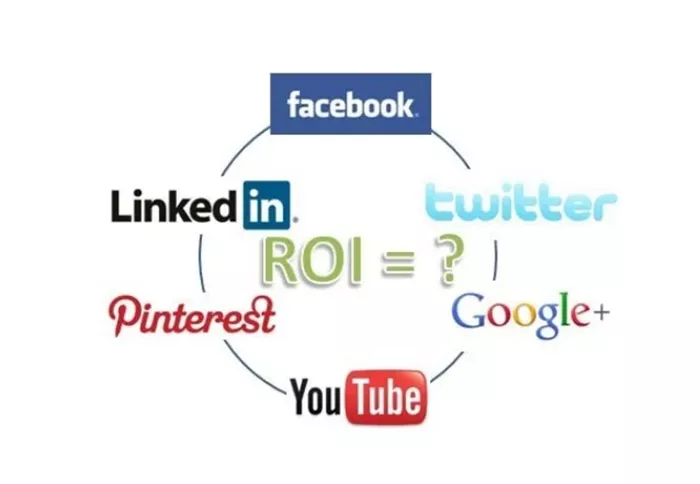In today’s marketing landscape, gauging the success of social media often feels like chasing shadows—there may be many likes, shares, and followers, but proving tangible business impact remains a challenge.
By 2024, brands are expected to allocate roughly 11% of their total marketing budgets to social media. Yet, many still ask: What is the real return on investment (ROI) from social media?
At its core, social media ROI measures the business value generated per dollar, hour, or post spent on social channels—whether that be revenue, leads, or brand influence. Importantly, it demands data-driven proof to support decision-making.
This need has never been greater. With marketing budgets under tight scrutiny, demonstrating clear impact is no longer optional—it’s essential for survival.
This article clarifies how to align social media ROI with core business objectives, turning complex data into actionable insights that executives cannot ignore.
Understanding the Executive Mindset
To communicate social media’s true value to executives, it’s vital to understand what drives their decisions.
Executives prioritize initiatives that affect the company’s bottom line and long-term stability. Unlike marketers who focus on engagement metrics, executives seek tangible business outcomes such as increased revenue, market share growth, cost reduction, and risk management.
However, social media teams often struggle to present results that resonate at this level, as traditional metrics like likes, shares, and follower counts rarely translate directly into strategic business goals.
This disconnect leads to a common pain point: executives view social metrics as superficial or irrelevant, making it hard for teams to justify budgets or demonstrate real impact.
Bridging this gap requires moving beyond vanity metrics to a comprehensive framework that directly links social activities to financial and operational objectives.
Key ROI Metrics That Matter to Executives
Not all social media metrics carry equal weight. Executives want numbers that clearly impact the bottom line.
The following indicators effectively demonstrate social media’s true value:
Customer Lifetime Value (LTV) from Social Channels: Measures total revenue generated by customers acquired via social media over their entire relationship with the brand, highlighting long-term financial impact.
Brand Awareness Growth: Tracks increases in brand recognition driven by social campaigns, often measured by surveys, search volume, or social impressions, signaling market share expansion.
Share of Voice: Reflects the proportion of brand-related conversations on social platforms relative to competitors, indicating brand presence and influence in the market.
Customer Retention Rate (Social-Acquired Customers): Indicates how well social media retains customers over time, demonstrating loyalty and engagement effectiveness.
Organic Reach Growth: Monitors the audience growth of unpaid social content, underscoring the success of content strategies in driving authentic engagement.
Beyond these, executives also focus on metrics such as revenue attribution (sales directly driven by social media), cost efficiency (lower costs versus traditional advertising), brand equity measurement (trust and reputation built through social), and competitive intelligence derived from social listening.
Measuring Social Media ROI with Socialinsider
Tracking these metrics can be challenging, especially when consolidating data across platforms.
Socialinsider offers an integrated solution that aligns key performance indicators (KPIs) with business goals and converts complex data into actionable insights marketers can trust.
Its platform aggregates data from multiple channels, applies granular tagging, and provides real-time reporting, helping teams connect social efforts to tangible business results recognized by executives.
Key features include:
KPI Tracking Aligned with Goals: Define objectives and monitor engagement, conversions, reach, and impressions. Content tagging facilitates comparative analysis across campaigns or themes.
Centralized Analytics and Reporting: Unified dashboards enable cross-platform campaign monitoring, including influencer and brand account tracking.
Data-Driven Optimization: Continuous analysis identifies top-performing content and channels, allowing real-time strategy adjustments to maximize ROI.
Building an Executive-Centric ROI Measurement System
Executives demand clear, actionable insights that show how every dollar spent creates value.
To meet this, your ROI framework must be precise, integrated, and strategically aligned across the organization.
Key steps include:
Developing Accurate Attribution Models: Move beyond last-click attribution to multi-touch models that reflect the full customer journey. Tailor models to your business, and leverage machine learning for ongoing refinement.
Leveraging Tools and Technology: Implement unified data platforms with AI-driven analytics and automated reporting to transform data into strategic assets.
Encouraging Cross-Department Collaboration: Define clear roles, unify KPIs, foster transparent communication, and build data literacy to support shared accountability.
Integrating Data Sources: Consolidate fragmented data from CRM, ERP, marketing, and finance systems using middleware and APIs, ensuring standardized and validated data flows.
The Prospect of Social Media ROI Measurement
The era of basic social metrics is ending. With more channels and complex customer journeys, traditional ROI approaches are reaching their limits.
Looking ahead, success will belong to those who harness AI and predictive analytics.
AI-powered tools can forecast outcomes, identify high-value audiences, and detect sentiment shifts in real time, enabling proactive campaign adjustments and smarter budget allocation.
Furthermore, integrating social data into broader marketing mix models (MMM) offers a holistic view of marketing effectiveness, revealing how social interacts with TV, search, print, and offline campaigns to optimize overall spend.
Final Thoughts
If social media is to be seen as a growth driver rather than a cost center, it’s time to elevate ROI measurement.
Start by aligning your metrics with business priorities and building cross-functional reporting systems that translate data into executive-ready insights.
When you measure what truly matters and communicate it effectively, ROI becomes more than a number—it becomes your strongest argument for doing more and doing better.
Related Topics
- Social Media Ad Fraud to Cost $172 Billion by 2028
- The Rise of Social Media in Modern Marketing Strategies
- Enhancing Brand Loyalty Through Social Media

